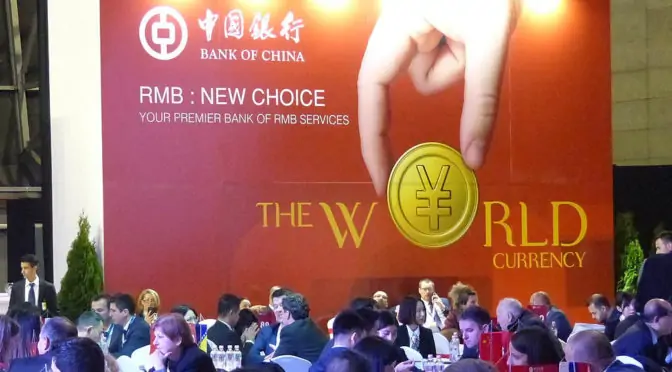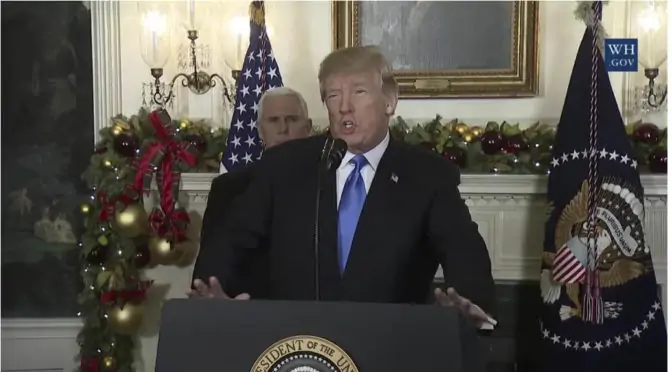On 1 November 2017, Russian Premier Dmitry Medvedev and Chinese Premier Li Keqiang signed a mammoth deal in space cooperation.
That agreement involves six space-related areas, such as lunar and deep space, joint spacecraft development, space electronics, Earth remote sensing data and space debris monitoring (“China, Russia agree cooperation on lunar and deep space exploration, other sectors”, ![Li Keqiang and Dmitry Medvedev at the 21st regular meeting of Russian and Chinese heads of government Government.ru [CC BY 4.0 (http://creativecommons.org/licenses/by/4.0)], via Wikimedia Commons Li Keqiang and Dmitry Medvedev at the 21st regular meeting of Russian and Chinese heads of government](https://redanalysis.org/wp-content/uploads/2018/01/640px-Li_Keqiang_and_Dmitry_Medvedev_at_the_21st_regular_meeting_of_Russian_and_Chinese_heads_of_government-300x169.jpg) Global Times, Nov 02, 2017). This deal bestows a new dimension to the already massive cooperation between these two very large powers. Indeed, as we shall explore below, the Russia – China space cooperation is a de facto synergy about a new definition of industrial and strategic power. Space industry evolutions as well as the convergence of Chinese and Russian artificial intelligence strategies and robot development strategies overdetermine the emergence and settling in of this definition.
Global Times, Nov 02, 2017). This deal bestows a new dimension to the already massive cooperation between these two very large powers. Indeed, as we shall explore below, the Russia – China space cooperation is a de facto synergy about a new definition of industrial and strategic power. Space industry evolutions as well as the convergence of Chinese and Russian artificial intelligence strategies and robot development strategies overdetermine the emergence and settling in of this definition.
In effect, the Chinese space program relies heavily on the combination of launching capabilities and of autonomous robots, designed to operate on the Moon (Jean-Michel Valantin “The Chinese New Silk Road, from oil wells … to the Moon and Beyond”, The Red Team Analysis Society, July 6, 2015). Similarly, Russia is working at renewing its space capabilities, as well as the industrial and military basis that supports the development of its launch and space vehicles.
Moreover, both nations want to develop space assets and install themselves on the Moon, … for a start (Yang Sheng, “China eyes unprecedented 40 space launches in 2018”, Global Times, 2018/1/4). Meanwhile, as we shall highlight below, these technological, industrial and strategic convergences are also inscribed in the race for the development of artificial intelligence. Furthermore, this convergence of the Chinese and Russian space strategies also necessitates the coordination of industrial, robotic and artificial intelligence capabilities, as well as of space capabilities. Each of these capabilities already constitutes a strategic leap for the nations that are able to develop them. The convergence of such capabilities is nothing but a geopolitical revolution.
These are the issues we shall explore in this series of articles.
In the first article of the series, we shall look at the way China is coupling both its Moon robot and space programs, while the Moon robot development is inscribed within the Chinese robots and artificial intelligence current revolution. First, we shall see that the Chinese Moon program is robot-centred. Then, we shall stress that the next step of this program is intrinsically linked to the current robotics and artificial intelligence hyper development in China. Finally, we shall focus upon the interactions between the robots, artificial intelligence and space programs and their role in the current transformation of China into a technological cutting-edge world power.
Chinese robots on the Moon
The Chinese space and Moon program is largely robot-centred. On 13 December 2013, the Chang’e 3 rocket brought the Yutu Moon Rover close to the Moon, where the rover soft-landed. This event highlighted the tremendous success of the program (“China Moon Probe VIDEO Shows ‘Chang’e’ Nail Landing On Lunar Surface », The Huffington Post, 12/17/2013). The rover’s landing was the third step of the multiple phases of the space and Moon Chinese program, after the Chang’e 1 mission, which launched the first Chinese Lunar orbiter in 2007, and the Chang’e 2 craft, which orbited around the Moon with scientific sensors, before reaching the Lagrangian point between Earth and Moon (“Chang’e 5 Test Mission”, Spaceflight.com, 3 January 2018).
![Chang'e-3 lunar landing site By NASA Public domainPublic domainfalsefalse This file is in the public domain in the United States because it was solely created by NASA. NASA copyright policy states that "NASA material is not protected by copyright unless noted". (See Template:PD-USGov, NASA copyright policy page or JPL Image Use Policy.) Warnings: Use of NASA logos, insignia and emblems is restricted per U.S. law 14 CFR 1221. The NASA website hosts a large number of images from the Soviet/Russian space agency, and other non-American space agencies. These are not necessarily in the public domain. Materials based on Hubble Space Telescope data may be copyrighted if they are not explicitly produced by the STScI.[1] See also {{PD-Hubble}} and {{Cc-Hubble}}. The SOHO (ESA & NASA) joint project implies that all materials created by its probe are copyrighted and require permission for commercial non-educational use. [2] Images featured on the Astronomy Picture of the Day (APOD) web site may be copyrighted. [3] The National Space Science Data Center (NSSDC) site has been known to host copyrighted content even though its photo gallery FAQ states that all of the images in the photo gallery are in the public domain. (NASA (Without annotations)) [Public domain or Public domain], via Wikimedia Commons Chang'e-3 lunar landing site](https://redanalysis.org/wp-content/uploads/2018/01/Change-3_lunar_landing_site.jpg)
The Yutu Moon rover was operational for one year. Then, in 2014, it became immobile. It finally stopped functioning in August 2016. The three-years lifespan of the rover was much longer than its creators originally expected (Jean-Michel Valantin, “China and the New Silk Road: From oil wells to the Moon, … and Beyond”, The Red (Team) Analysis Society, July 6, 2015).
Building upon this success, the Chinese space agency is preparing the Chang’e 5 operation, which will involve the launch of a new Moon rover in 2019. (The link between Chang’e 3 and Chang’5, the Chang’e 4, is a spatial probe, designed after Chang’e 3, as a redundant part for Chang’e 5 that should be launched in 2018 (“Chang’e 4“, Wikipedia)).
The Chang’e 5 rover will be fully automated and will be able to take Moon rock samples before ascending from the Moon, then docking to a space module that will bring it back on Earth. The new rover and its landing on the Moon is conceived as an important step towards the creation of a permanent Chinese Lunar base around 2030. This Lunar base will be built and operated by robots. (Andrew Jones, “China sets out a long-term transportation roadmap plan including a nuclear space shuttle”, Global Times, Nov 16 2017 and Kyree Leary, “China just revealed its plans to pulling ahead in the space race- and they include a nuclear-powered shuttle”, Business Insider UK, Nov 18, 2017).
In this context, the success of the new Moon rover missions is a very important technological, operational and political brick for China.
Chinese robot: from artificial intelligence and industry, to the Moon
In 2013, the key to the success of the Chinese Lunar rover, named the “Jade Rabbit”, was that the robot had been designed in order to be as autonomous as possible once landed on the Moon. This autonomy capability must be greatly upgraded for the much more complex Chang’e 5 mission, which involves sampling rocks and bringing them back by a fully automated robot (“Chang’e 5 Test Mission”, Spaceflight.com, 3 January 2018).
![Application field solar By KUKA Systems GmbH (KUKA Systems GmbH) [CC BY-SA 3.0 (https://creativecommons.org/licenses/by-sa/3.0)], via Wikimedia Commons Application field solar](https://redanalysis.org/wp-content/uploads/2018/01/480px-Application_field_solar-300x300.jpg)
This crucial issue of autonomy for the new Lunar robotic mission is embedded in the Chinese technological and industrial environment, defined by the way robots are taking up tasks of a growing complexity thanks to their integration with artificial intelligence capabilities (Jean-Michel Valantin, “The Chinese artificial intelligence revolution”, The Red (Team) Analysis Society, November 13, 2017). In effect, China, along with U.S. private companies, is at the forefront of the twin development dynamics of robots and artificial intelligence (Ma Si “Smartening the world with robots”, China Daily, 2017-09-25).
This dynamic is generated by multiple sectors, from industrial to domestic robots, while, in the same time, the Chinese government and the giant Chinese tech companies Baidu, Alibaba, Tencent, and Huawei, heavily invest in the artificial intelligence field (Sarah Hsu, “China is investing heavily into Artificial intelligence, and could soon catch up with US”, Forbes, July 3, 2017). These investments are explicitly made in order to turn China into the world leader in artificial intelligence over the next 15 years. The government plans to invest more than 150 billion dollars into this endeavour, to which private funding will need to be added (“New Generation Artificial Intelligence Development Plan” (新一代人工智能发展规划 and “China’s got a huge artificial intelligence plan”, Bloomberg Technology, 21 July 2017).
![TENCENT TOWER By JHH755 (Own work) [Public domain], via Wikimedia Commons TENCENT TOWER](https://redanalysis.org/wp-content/uploads/2018/01/360px-TENCENT_TOWER-225x300.jpg)
This Chinese dynamic that allies robotics with artificial intelligence has been officially defined by the government in the “Made in China” report of 2015, which states the official will to turn China into the international leader in the different fields, among others, of electric/smart car, information technology, aerospace equipment, agriculture machinery, which are all related to AI and robotics, actually considered as a sub-field of AI (“Made in China 2015” Plan, The State Council of the People’s Republic of China, May 19, 2015 and Jean-Michel Valantin, “China: Towards the digital ecological revolution?”, The Red (Team) Analysis Society, October 22, 2017; Helene Lavoix, “When Artificial Intelligence will Power Geopolitics – Presenting AI“, The Red (Team) Analysis Society, 27 Nov 2017 ).
This policy supports giant partnerships as well as mergers and acquisitions between Chinese companies and leading foreign companies. For example, the mammoth Chinese robotics company Midea has now acquired the German giant of industrial robotics Kuka (Li Xuena, Wang Cixin, Zhang Boling, “China’s factories are building a robot nation”, ChinaFile, March 10, 2015). In other terms, by developing literally a robot workforce coordinated by multiple levels of artificial intelligence, China installs itself at the vanguard of “intelligent” industrial productivity on a global scale (Jane Perlez, Paul Mozur, Jonathan Ansfield, “China’s technology could upset the global trade order”, The New York Times, Nov. 7, 2017). In 2017 only, China produced more than 120 000 robots (“China produces more than 100 000 industrial robots in first ten months”, Global Times, 2017/12/13).
This exponentially growing expertise and practice in the fields of robotics and of artificial intelligence is the very ecosystem of the development of the Chang’e 5 Lunar rover as an autonomous robot. In other terms, this twin development of robots and of artificial intelligence and the implementation of the Lunar and deep space Chinese program appear as interactive drivers of the development of China and of its transformation into an “intelligent” industrial power, defined by the crossover between the robots and artificial revolution and a space development revolution. The Chang’e 5 Lunar robot is at the intersection of these interactive dynamics.
The Chinese space program
Furthermore, the Chinese space and moon program is also an industrial and political Chinese-led program, integrating, through the Asia-Pacific Space Cooperation Organization (Bangladesh, China, Iran, Mongolia, Pakistan, Peru, Thailand, Turkey) and other cooperation partnerships such as with India, industrial hardware, software and also political cooperation (K.S. Jayamaran, “India and China Sign Space Cooperation Pact », Space News, September 22, 2014).
![The Launch of Long March 3B Rocket By AAxanderr (Own work) [Public domain], via Wikimedia Commons The Launch of Long March 3B Rocket](https://redanalysis.org/wp-content/uploads/2018/01/350px-The_Launch_of_Long_March_3B_Rocket-219x300.jpg)
As these countries are not directly involved in the space race, or even very far from it, with the exception of Iran and India, by supporting the Chinese space program, they become part and members of the opening of the space and Moon segment of the Chinese “Belt and Road” policy of which they are already part, again with the exception of India so far. Its space program also helps China to boost its research and development, while politically and industrially sharing its success with its partners. In the meantime, China gets access to this strategic “ultimate high ground” that orbital space and lunar space are (William Burrows, This New Ocean, 1998)
It is both in this international cooperation system defined by the Russia – China “special relationship” and the Belt and Road initiative and in the space development and cooperation dimension that the new partnership between China and Russia reveals its full geopolitical meaning, which will be the topic for the next article of this series.
About the author: Jean-Michel Valantin (PhD Paris) leads the Environment and Geopolitics Department of The Red (Team) Analysis Society. He is specialised in strategic studies and defence sociology with a focus on environmental geostrategy.
Featured image: Annotated image of the approximate landing site of the Chinese Chang’e-3 lander. It was launched at 17:30 UTC on 1 December 2013, and reached the Moon’s surface on 14 December 2013. The lunar coordinates are: 44.12°N 19.51°W. NASA, Public Domain.














